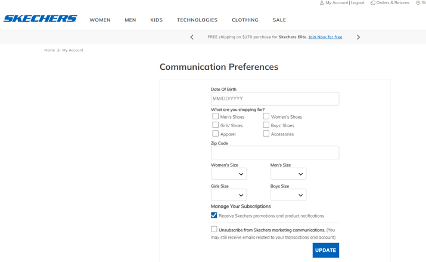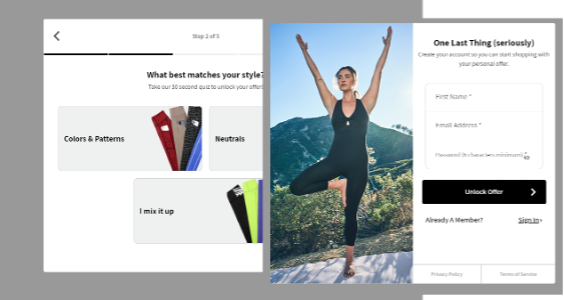Zero party data is data a customer willingly and openly shares with a company. It includes information related to personal preferences, communication preferences, purchase intentions, and other data that helps a brand improve the customer experience.
Zero-party data differs from first-party data in that it is information the customer provides directly, typically through a preference center or loyalty program. First-party data, on the other hand, is customer data collected through interactions with a brand, such as purchasing products, support tickets, website activity, email engagement, and so on.
Why is Zero Party Data Important?
The need to create more targeted, personalized customer experiences is driving the demand for zero-party data. Consumers don’t want generic messages or to be inundated with irrelevant marketing. Instead, they want brands to know them and understand their needs.
Brands typically used third-party data from providers that collected this type of data from cookies but soon, this will no longer be possible. Google is phasing out third-party cookies by 2023. Also, growing privacy regulations have resulted in companies like Apple and Facebook giving consumers the option of sharing their online activity with brands, and many consumers are opting out.
Customers who want personalized experiences will need to share their information with brands willingly. That means they must trust that brands will secure and protect their data and use it appropriately and transparently.
Zero party data also works for both customers and prospective customers. When combined with first-party customer data, the brand can create highly personalized, targeted experiences. But when the consumer isn’t yet a customer, they still demand a more personalized experience, and collecting zero party data gives it to them.
Collecting Zero Party Data
Brands collect zero-party data through a number of methods, including:
Preference centers on websites and email: Consumers can create an account and indicate how they want to be communicated with (e.g., email, SMS) and what types of products they typically shop for.

Loyalty programs: Consumers sign up for loyalty programs with brands to get deals and exclusive offers. Grocery stores offer loyalty cards where consumers earn points for buying certain products or discounts for selected products. Points earn them cash towards future purchases. Loyalty cards provide brands with shopping habits that help them personalize future offers.
Surveys or quizzes: Brands and retailers can use surveys or quizzes to collect information about the consumer and use that information to personalize recommendations and offers. 
Other methods of collecting zero-party data include website pop-up forms, social media polls, and opt-in forms where customers are asked for information like demographics such as zip code or age. Brands can also collect data through a welcome email series that includes a survey to help the brand learn more about the customer.
Zero-Party Data Use Cases
Brands use zero-party data in several ways, all designed to create personalized consumer experiences. They can use this data on the website to display recommended products or content. They can offer discounts and notifications of upcoming sales through email and SMS ahead of non-subscribers.
Many brands collect zero party data to send exclusive offers or invite customers to special events. They also offer gifts or coupons for birthdays or other special dates.
Key Considerations When Collecting Zero Party Data
Consumers put their trust in brands when they provide personal information, so it’s critical for brands to not only protect that data but also use it wisely. Brands need to identify what programs they will employ that require zero party data and precisely what data they will need to capture to run those programs. Data such as favorites, interests, demographics, and communication preferences are common data types to request.

